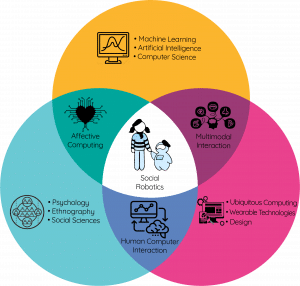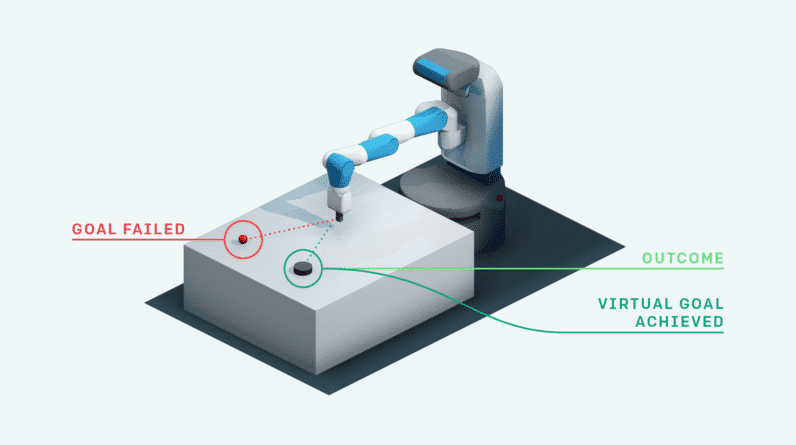In today’s fast-paced and ever-changing world, remote work has become the norm for many individuals and companies. With the rise of AI technology, virtual collaboration and workflows have been taken to a whole new level. AI has proven to be an invaluable tool in optimizing efficiency and productivity in remote work settings. From automated task management to enhanced communication platforms, AI is revolutionizing the way we work together from different locations. In this article, we will explore the various ways in which AI is helping to optimize virtual collaboration and workflows, making remote work more seamless and successful than ever before.

The Benefits of AI in Remote Work
In recent years, many companies have embraced remote work as a viable alternative to traditional office-based setups. This shift has been accelerated by the advancements in artificial intelligence (AI) technology. AI offers numerous benefits for remote work, enhancing communication and collaboration, increasing efficiency and productivity, and improving task and project management.
Enhanced Communication and Collaboration
One of the key advantages of AI in remote work is improved communication and collaboration. With AI-powered tools, you can seamlessly connect and collaborate with team members regardless of their physical location. Video conferencing and virtual meeting solutions enable face-to-face interactions, promoting better engagement and understanding among remote team members. These tools have advanced features like screen sharing, file sharing, and real-time messaging, making it easier to work together on projects and tasks.
Increased Efficiency and Productivity
AI technology can significantly enhance efficiency and productivity in remote work. By automating repetitive and time-consuming tasks, AI-powered virtual assistants and chatbots allow you to focus on more value-added activities. These assistants can perform a wide range of tasks, such as scheduling meetings, answering common questions, and providing real-time updates on project status. With AI taking care of mundane tasks, you can save precious time and channel your energy into more important aspects of your work.
Improved Task and Project Management
Managing tasks and projects can be challenging in a remote work environment. However, AI tools offer innovative solutions to streamline these processes. Automated task prioritization and scheduling help you stay organized and ensure that critical tasks are completed on time. Additionally, intelligent document management systems leverage AI algorithms to categorize and organize files, making it easier to access and collaborate on project documents. With AI-powered project management tools, you can track progress, allocate resources, and oversee the entire project lifecycle seamlessly.
AI Tools for Remote Collaboration
To effectively leverage AI in remote collaboration, it is essential to utilize the right tools and platforms. Here are some key AI tools that can enhance remote collaboration:
Video Conferencing and Virtual Meeting Solutions
AI-powered video conferencing and virtual meeting solutions revolutionize remote collaboration by providing a platform for face-to-face interactions. These tools offer features such as screen sharing, virtual whiteboards, and real-time messaging, enabling teams to collaborate effectively on projects and tasks. The use of AI algorithms also ensures high-quality video and audio, reducing the chances of communication glitches and enhancing the overall meeting experience.
Collaborative Document Editing and Sharing
Collaborative document editing and sharing tools powered by AI facilitate seamless collaboration on documents and files. These tools allow multiple team members to work on the same document simultaneously, eliminating version control issues and promoting real-time collaboration. AI algorithms help in detecting and resolving conflicts in editing, ensuring that everyone is working on the most up-to-date version of the document.
Virtual Assistants and Chatbots
AI-powered virtual assistants and chatbots play a crucial role in remote collaboration by automating tasks and providing instant support. These assistants can handle routine queries, gather information, and provide real-time updates, freeing up time for more important work. Through natural language processing, chatbots can understand and respond to user queries, providing personalized assistance even in a remote work environment.

Using AI for Workflow Optimization
AI technology can optimize workflows in remote work environments, ensuring seamless collaboration and efficient task execution. Here are some ways in which AI can be used for workflow optimization:
Automated Task Prioritization and Scheduling
Managing tasks and prioritizing them appropriately is vital for remote work success. AI-powered tools can analyze the urgency and importance of tasks, automatically prioritizing them based on predefined criteria. These tools can also generate personalized task schedules, ensuring that you focus on the most critical tasks first.
Intelligent Document Management
In a remote work setup, organizing and managing project documents can be challenging. AI-powered intelligent document management systems utilize machine learning algorithms to categorize, tag, and store documents effectively. This ensures that documents are easily accessible to all team members, enabling seamless collaboration.
Predictive Analytics for Decision Making
AI-powered predictive analytics tools can significantly impact decision-making in remote work. By analyzing historical data and patterns, these tools can provide insights and recommendations for better decision-making. Whether it’s forecasting project timelines or predicting resource requirements, AI can help remote workers make informed decisions that drive productivity and efficiency.
AI-powered Virtual Collaboration Challenges and Solutions
While AI offers immense potential for virtual collaboration, there are also challenges to be overcome. Here are some key challenges and potential solutions for AI-powered virtual collaboration:
Data Security and Privacy
Data security and privacy are major concerns when it comes to using AI in remote work. Companies must ensure that AI-powered tools comply with robust security measures to protect sensitive data. Implementing secure data encryption, employing multi-factor authentication, and conducting regular security audits can help mitigate these risks.
Building Trust and Transparency
Building trust in AI-powered virtual collaboration is crucial for its successful implementation. Many employees may have concerns about AI replacing human jobs or biases in the AI algorithms. Employers can address these concerns by being transparent about the use and limitations of AI, providing training and support to employees, and involving them in the decision-making process regarding AI utilization.
Overcoming Technical Limitations
Like any technology, AI-powered virtual collaboration tools also have technical limitations. Issues such as network connectivity, compatibility, and user interface design can hinder the seamless integration of AI tools. Regular updates, user feedback, and collaboration with technology providers can help overcome these limitations and ensure a smooth experience for remote workers.

Evaluating the ROI of AI in Remote Work
Implementing AI in remote work can yield significant returns. Here are some key aspects to consider while evaluating the return on investment (ROI) of AI in remote work:
Cost Savings and Efficiency Gains
AI technology reduces manual effort and automates repetitive tasks, resulting in cost savings and increased efficiency. By optimizing workflows and streamlining processes, remote teams can accomplish more in less time, leading to higher productivity and cost savings in the long run.
Employee Satisfaction and Retention
AI-powered virtual collaboration tools can enhance employee satisfaction and retention. By automating routine tasks, AI allows employees to focus on more meaningful work, leading to higher job satisfaction. Additionally, seamless collaboration and effective communication through AI-powered tools help remote employees feel connected, reducing feelings of isolation and improving overall satisfaction.
Impact on Business Outcomes
Ultimately, the success of implementing AI in remote work is determined by its impact on business outcomes. AI-powered tools can help meet project deadlines, improve customer satisfaction, and drive innovation. Evaluating key performance indicators such as project completion rates, customer feedback, and revenue growth can provide insights into the impact of AI on business outcomes.
Implementing AI in Remote Work: Best Practices
To effectively implement AI in remote work, it is essential to follow best practices. Here are some guidelines to consider:
Identify Relevant Use Cases and Workflows
Start by identifying areas where AI can bring the most value in your remote work setup. Analyze different workflows and task types to understand where AI can automate processes, enhance collaboration, or improve decision-making. Focus on use cases that align with your organization’s goals and priorities.
Choose the Right AI Tools and Platforms
Selecting the right AI tools and platforms is critical for successful implementation. Consider factors such as functionality, scalability, user experience, and integration capabilities while evaluating different options. Choose tools that align with your organization’s objectives and are intuitive for remote employees to use.
Train and Educate Employees
Providing comprehensive training and education to employees is essential to ensure seamless adoption of AI-powered tools. Offer training programs that cover the functionalities, benefits, and limitations of AI tools. Encourage employees to ask questions and provide ongoing support to address any concerns or challenges they may face during the implementation process.

Ethical Considerations and AI in Remote Work
As AI becomes increasingly integrated into remote work, ethical considerations are of utmost importance. Here are some key ethical considerations to keep in mind:
Algorithmic Bias and Fairness
AI algorithms are built upon data, and if the data is biased, it can lead to algorithmic bias. This bias can result in unfair decision-making and discrimination. Organizations must ensure that AI algorithms used in remote work are regularly audited for bias and fairness and take corrective actions when necessary.
Guarding Against Discrimination and Bias
Organizations must establish policies and guidelines to guard against discrimination and bias in the use of AI. It is essential to ensure that AI tools are designed to treat all users fairly and without prejudice. Regular monitoring, reporting, and evaluation can help identify and rectify any instances of discriminatory or biased behavior.
Ensuring Ethical Use of AI
Using AI responsibly is crucial in remote work. Organizations must have clear guidelines and policies in place to ensure the ethical use of AI. This includes respecting user privacy, obtaining informed consent for data collection, and ensuring that AI tools are used in a manner that aligns with legal and ethical standards.
The Future of AI and Remote Work
The integration of AI in remote work is an ongoing journey, and the future holds even more exciting possibilities. Here are some trends that could shape the future of AI and remote work:
AI-Powered Augmented Virtual Reality
The combination of AI and augmented reality (AR) can revolutionize remote work. AI algorithms can add context-awareness and intelligence to AR applications, enhancing virtual collaboration experiences. With AI-powered AR, remote workers can collaborate more effectively, remotely visualize complex data, and participate in immersive virtual meetings.
Seamless Integration of AI and Human Collaboration
The future of remote work lies in the seamless integration of AI and human collaboration. AI can take care of repetitive tasks, facilitate real-time decision-making, and help in organizing work. Human workers can focus on creativity, critical thinking, and complex problem-solving, maximizing the value they bring to the organization.
Continuous Improvement and Adaptation
As AI evolves, it will continue to improve and adapt to the changing needs of remote work environments. AI-powered tools will become more intelligent, more intuitive, and more capable of understanding human preferences and behaviors. Continuous research, development, and innovation will fuel the advancement of AI in remote work.

Conclusion
The use of AI in remote work offers immense benefits, from enhanced communication and collaboration to increased efficiency and productivity. With AI-powered tools for remote collaboration, workflow optimization, and decision-making, remote teams can overcome challenges and achieve better outcomes. By considering ethical considerations, evaluating ROI, and following best practices, organizations can navigate the implementation of AI in remote work successfully. The future of AI and remote work holds exciting possibilities, laying the groundwork for a more connected and productive remote workforce.






